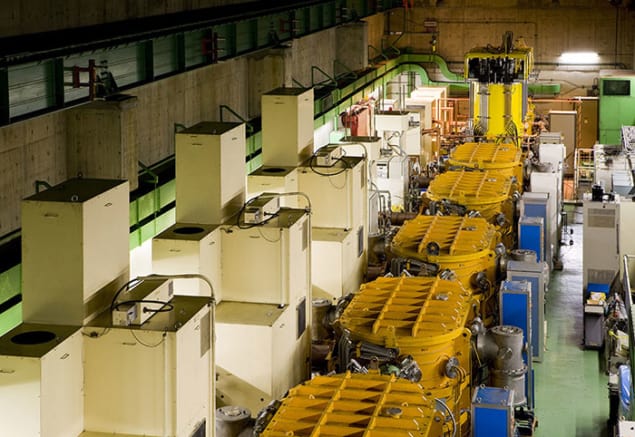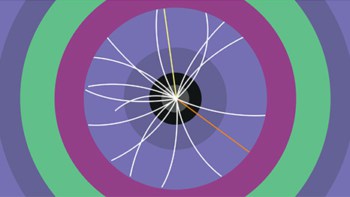
Two independent experiments have verified that the radioactive nucleus nickel-78 is “doubly magic”, as predicted by the nuclear shell model. The nucleus contains 28 protons and 50 neutrons, which makes it an ideal candidate to test whether shell model applies to nuclei with relatively large numbers of neutrons.
In 1949 Maria Goeppert-Mayer pointed out that nuclei with “magic numbers” of protons or neutrons (2, 8, 20, 28, 50, 82 and 126) were more stable than others. This led to the development of the nuclear shell model, for which Goeppert-Mayer shared the 1963 Nobel Prize for Physics. The idea behind the model is that protons and neutrons fill nuclear orbitals in analogy to how electrons fill orbitals in atoms. When a nucleus has a magic number of neutrons, for example, its outer shell of orbitals is completely filled by neutrons. There are relatively large energy gaps between shells and this means that it is difficult to move a neutron from the full shell into the next empty shell – making the nucleus relatively stable.
Perturbed orbitals
Nickel-78 should be doubly magic because it has full proton and neutron outer shells. Protons and neutrons are different particles, and therefore occupy different orbitals. However, they feel each other’s presence via the strong force and this can perturb the orbitals so much that the shell model breaks down and new magic numbers emerge. This is known to occur in some nuclei that have high ratios of neutrons to protons.
Now, international teams working independently at the ISOLDE facility at CERN in Switzerland and the Radioactive Ion Beam Factory (RIBF) in Tokyo have gained important insights into nickel-78 by studying the copper-79 nucleus, which has an extra proton.
Mass measurements
The RIBF team did spectroscopic measurements of copper-79 nuclei in an excited energy state. Their results allowed them to conclude that copper-79 is best described as having one proton in the next shell above the closed 28-proton shell – thus confirming the shell model. The ISOLDE team took a very different approach and made precise measurements of the masses of the copper isotopes copper-75 to copper-79. This allowed them to conclude that copper-79 is best described as a doubly-magic nickel-78 nucleus with one proton in the next shell.
Both studies are reported in Physical Review Letters.



